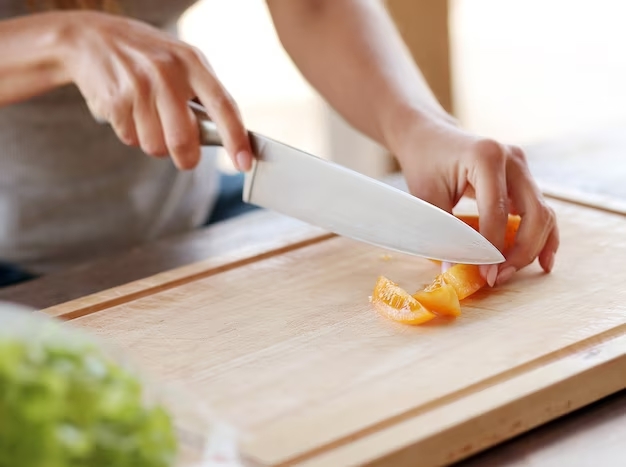Wooden cutting boards are not just kitchen tools; they are an investment in the art of cooking and a centerpiece for culinary creativity. To ensure the longevity and beauty of your wood cutting board, it’s crucial to know how to seal it properly. In this guide, we’ll explore the essential tips and tricks to protect your wood cutting board and keep it in top-notch condition for years to come.
Why Seal a Wood Cutting Board?
Before diving into the “how,” let’s understand the “why.” Sealing a wood cutting board serves two primary purposes: preventing moisture absorption and protecting against bacteria. Wood is a porous material, and without proper sealing, it can soak up liquids from food, leading to warping, cracking, and an increased risk of bacterial growth. Sealing creates a protective barrier, maintaining the integrity of the wood and ensuring a safer food preparation surface.
Choosing the Right Sealant:
Selecting the right sealant is the first step in the process. There are various options available, but the most common and food-safe choices are mineral oil and beeswax. Mineral oil is a popular choice as it is odorless, tasteless, and won’t turn rancid. Beeswax, often combined with mineral oil, adds an extra layer of protection and a pleasing sheen to the wood.
Step-by-Step Guide: How to Seal a Wood Cutting Board
How to seal wood cutting board? Look no further. In this step-by-step guide, we’ll unravel the secrets to sealing your cutting board with precision. From cleaning to choosing the right sealant, follow these simple steps to ensure longevity, durability, and a touch of kitchen elegance.
- Clean the Cutting Board:
Start by cleaning your wood cutting board thoroughly. Use a mild detergent, warm water, and a soft brush or sponge to remove any food particles, stains, or odors.
- Allow the Board to Dry Completely:
After cleaning, let the cutting board air dry completely. Ensure there is no moisture left on the surface before moving on to the next step.
- Apply Mineral Oil:
Pour a generous amount of food-grade mineral oil onto the surface of the cutting board. Use a clean, lint-free cloth or paper towel to spread the oil evenly across the entire board, including the sides and edges.
- Let it Soak In:
Allow the mineral oil to soak into the wood for at least 4-6 hours, or overnight if possible. This allows the oil to penetrate the wood fibers, enhancing its resistance to moisture and preventing cracks.
- Remove Excess Oil:
After the soaking period, wipe off any excess mineral oil using a dry cloth. This step is crucial to prevent the board from feeling greasy during use.
- Apply Beeswax (Optional):
For an extra layer of protection and a beautiful finish, you can apply a mixture of melted beeswax and mineral oil. Simply melt the beeswax, mix it with mineral oil, and apply the mixture to the cutting board. Buff the surface gently to achieve a smooth and polished finish.
- Allow the Board to Cure:
Let the cutting board sit undisturbed for a day or two to allow the sealant to fully cure. This curing process ensures that the wood absorbs the sealant effectively, providing long-lasting protection.
Additional Tips for Wood Cutting Board Care:
Regular Maintenance:
- Reapply mineral oil or beeswax regularly, especially if your cutting board sees frequent use. This helps maintain the protective layer and keeps the wood hydrated.
Avoid Harsh Cleaners:
- Use mild, natural cleaning solutions to preserve the integrity of the sealant. Avoid harsh chemicals that can strip away the protective coating.
Resurface if Needed:
- If you notice your cutting board has scratches or signs of wear, consider resurfacing it. Sanding the surface lightly and reapplying the sealant can revitalize the board.
Conclusion:
How to seal wood cutting board? By following these tips and tricks for sealing your wood cutting board, you’re not just preserving a kitchen tool; you’re enhancing the aesthetics of your culinary workspace and ensuring a safe and enjoyable food preparation experience. Seal it right, and your wood cutting board will continue to be a reliable partner in your kitchen adventures for years to come.
